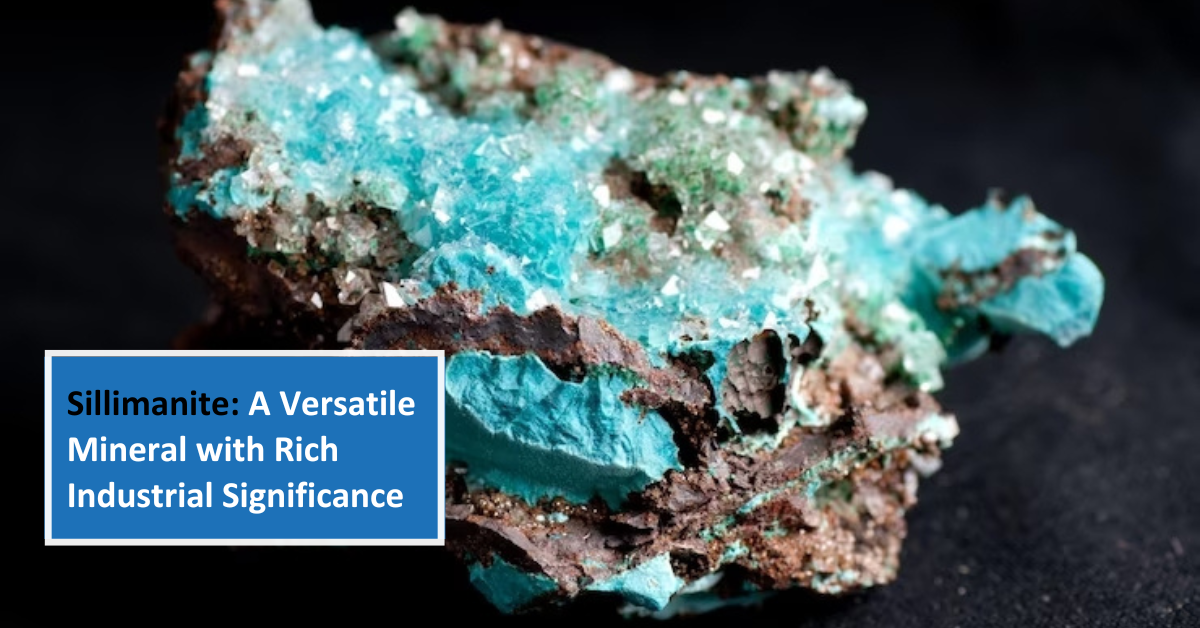

Posted on 07 July 2023
Sillimanite: A Versatile Mineral with Rich Industrial Significance
Sillimanite: A Versatile Mineral with Rich Industrial Significance
In the glittering world of minerals, there is one mineral that stands out for its remarkable versatility and applications in various industries – sillimanite. Sillimanite mineral plays a key role in the production of high-quality glass, foundry moulds, abrasive materials, and even serves as a captivating gemstone. Beyond its industrial applications, sillimanite mining also holds significant economic value and is distributed across the globe.
Join us as we dive deep into the multifaceted nature of sillimanite and explore its significance across diverse sectors.
What is Sillimanite?
Sillimanite belongs to the group of alumino-silicate minerals known as the sillimanite minerals. It is composed primarily of aluminium silicate, and its chemical formula is Al2SiO5. Sillimanite is characterized by its unique fibrous or columnar crystal structure, which gives it exceptional strength and resistance to heat.
This mineral is found in metamorphic rocks and is commonly associated with other minerals such as quartz and feldspar. With its useful properties, sillimanite finds applications across a plethora of industries. Its abundance and economic significance make it a valuable resource across the world.
Sillimanite in Glass Production:
Glass, a material we simply cannot do without in our everyday lives, owes its strength, durability, and clarity to the inclusion of sillimanite. Due to its high alumina and low iron content, sillimanite is a pivotal ingredient in the manufacturing of glass. It enhances the chemical resistance and thermal shock resistance of glass products. Whether it’s for automobile windshields, cookware, or architectural windows, the addition of sillimanite ensures a higher quality glass that can withstand rigorous usage and environmental conditions.
Foundry Moulds and Refractory Materials:
The foundry industry heavily relies on sillimanite due to its excellent thermal properties. 95% of the sillimanite minerals produced in the world are used as raw material for the refractory industry in the manufacturing of high-alumina refractories. Sillimanite’s ability to withstand extreme temperatures makes it a prime choice for manufacturing foundry moulds and refractory materials. Foundries use these moulds to shape and cast metals, and sillimanite’s high melting point and low thermal expansion make it ideal for this purpose. The mineral’s exceptional resistance to heat also ensures that it remains stable during the casting process, contributing to the production of high-quality metal components.
Abrasive Applications:
Many different industries have a need for abrasive materials for carrying out cutting, grinding, and polishing tasks. Sillimanite, with its exceptional hardness and toughness, serves as a great abrasive material, and finds widespread applications in the production of cutting tools, grinding wheels, and sandpaper. Sillimanite’s resistance to wear and its ability to retain its sharp edges even under high pressures make it a reliable choice for precision tasks in industries such as metalworking, automotive, and construction.
Sillimanite as a Gemstone:
And that’s not all! Beyond its industrial significance, sillimanite has captured the world of gemstones. This glittering mineral, when cut to fine shapes, explodes into a kaleidoscope of colours, ranging from sunny yellows to lush greens and rich browns. As a result, sillimanite gemstones are highly sought after by collectors and jewellery enthusiasts. The stone’s unique cat’s eye effect adds to its appeal. Sillimanite gemstones are not only prized for their aesthetic appeal but also for their durability, making them suitable for various types of jewellery. Sillimanite mineral crystals of the finest gem quality are sourced from Orissa, India; Mogok, Myanmar (Burma); and Ratnapura, Sri Lanka.
Economic Significance and Global Distribution:
Sillimanite mining holds significant economic value in regions where it is found. The extraction and processing of sillimanite contribute to plenty of job creation, empowering local economies. Large deposits of sillimanite can be found in countries such as India, Sri Lanka, Australia, South Africa, and the United States. These regions have seen the growth of mining operations and the establishment of related industries, further bolstering their economic development.
Sillimanite’s global distribution ensures a steady supply for industries around the world, reducing dependence on a single source. This widespread availability allows for competitive pricing, making sillimanite a cost-effective option for various sectors. The mineral’s natural abundance makes it a reliable resource that supports the growth and sustainability of multiple industries.
Wrapping Up!
From the glass we look through to the metals we use and the stunning jewellery we wear, sillimanite’s contributions are truly immense. If you require high quality sillimanite mineral for any purpose, do get in touch with the Maxworth Group. Based in Australia, we are global leaders in sourcing superior, environmentally friendly minerals and we specialize in sourcing and procuring minerals of exceptional quality, including Garnet, Sillimanite, Ilmenite, and many more.








